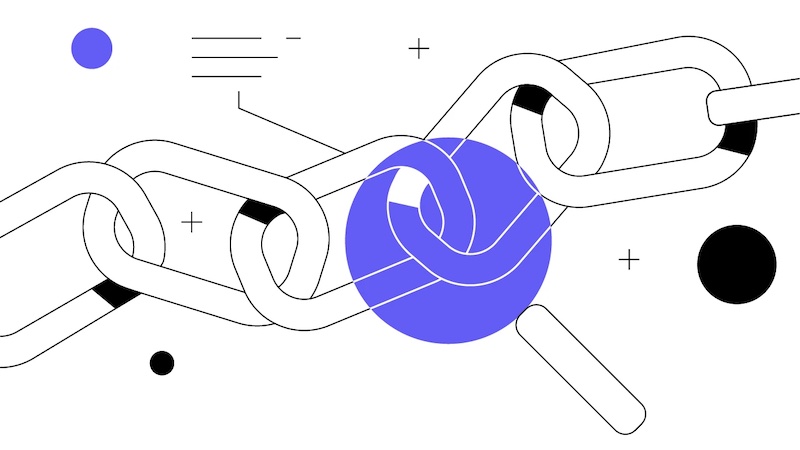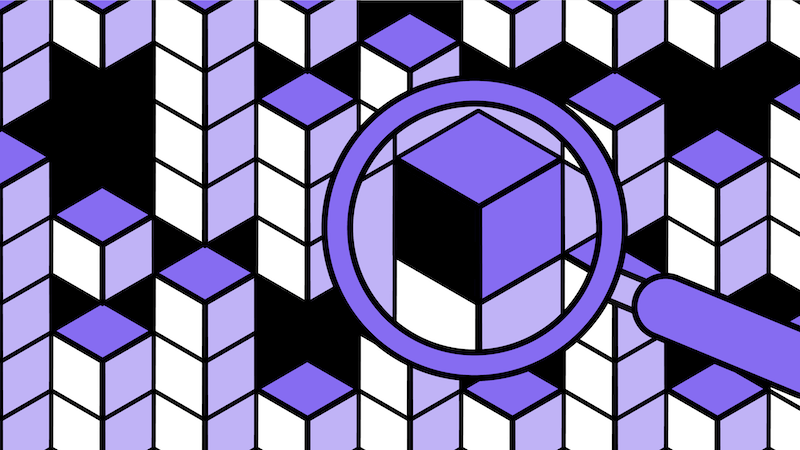Ever peered into the world of digital currency and wondered, What is a Blockchain Explorer? It’s like a super tool for digital cash! Imagine having X-ray vision to see every transaction and smart move on the blockchain. Now, that’s exactly what you’ll grasp after reading this. We’ll show you the ropes of this tech wizardry – no complex jargon, promise! Just think of it as your personal crypto detective kit, revealing the secrets behind every coin transfer and blockchain whisper. Strap in, folks; we’re diving into the digital ledger deep end—deducing, tracking, and verifying—all in this nifty exploration.
Understanding Blockchain Explorers and Their Fundamentals
Defining a Blockchain Explorer
Imagine a tool that lets you peek into crypto’s heart. This is a blockchain explorer. It’s a website to view all digital transactions. Think of it as Google for blockchain. You enter a transaction hash and boom! You see the details. This is how you verify blockchain transactions.
After that first search, things get clear. A blockchain explorer shows money moving on the blockchain. It’s open for all to use. With each click, you’re exploring distributed ledgers. They hold records of all trades, like a global ledger that never forgets.
Core Features and Functions of a Block Explorer
A block explorer has tools that let you track all sorts of activity. It tells you when a trade happened. It shows how much was traded. And the best part? It digs into the secrets of both Bitcoin and Ethereum. With a bitcoin explorer, you can follow bitcoin moves. An ethereum explorer does the same for ether.
What’s in this toolbox? Well, you get a transaction hash search. With it, you find specific deals right away. A block height checker tells you a coin’s journey step-by-step. Want to know your balance without opening your wallet? Use an address balance viewer.
Let’s talk about the latest blocks in blockchain. These are like the newest web pages on the internet. A blockchain explorer lists them for you to see fresh trades. Also, it helps you look at the past with a crypto transaction history log.
The blockchain explorer features don’t end there. They also track blockchain confirmations. This checks that the deal is done and dusted. Plus, they are like a smart contract verifier. They confirm codes are running as they should.
All these functions of a block explorer are about one thing: seeing what’s up on the crypto scene. Imagine you found an old coin on the ground. With blockchain, you can see where it’s been. This is public ledger access. It’s having the knowledge at your fingertips. It’s knowing each coin’s story.
A blockchain ledger inspection can seem tough. But with these tools, it’s like playing detective in the world of crypto. And it’s all right there for anyone. No secrets, just facts for all who look. This is why the use of blockchain explorers is growing.
With blockchain analysis tools, you track down what you need. They give us all a sneak peek at this new currency world. From peeking at a single trade to checking a wallet’s full story, these gadgets do it all. Next time you’re curious, give it a try! It’s not just for pros. It’s for anyone who wants a closer look at where their crypto is going and where it’s been.
The Role of Blockchain Explorers in Cryptocurrency Analysis
How to Track Crypto Transactions Using Explorers
Imagine you’ve sent crypto to a friend. But, how do you know it went through? Well, that’s where a blockchain transaction tracker enters. It’s like a high-tech tracking system for your money. You just need the transaction ID, known as a hash. Then, you enter it into a crypto explorer, a website made for this. Click search, and there it is: your transaction’s live status. You can see when it left, where it’s going, and when it arrives.
For those new to this, using blockchain explorers can seem like reading code. But it’s not. These tools offer a view into the blockchain’s life. By viewing crypto transactions, you can verify blockchain transactions instantly. It’s like verifying mail delivery but for digital money. And if you use Bitcoin, check out a Bitcoin explorer. For Ethereum, try an Ethereum explorer. There’s one for each type of coin.
Importance of Blockchain Ledger Inspection and Public Access
Exploring a blockchain is not just techy fun. It’s important. Let’s say you hear about a charity collecting Bitcoin donations. Use a blockchain ledger inspection to see if the money really goes toward good causes. A blockchain stores all the moves of digital money in a list called a ledger. With public ledger access, anyone, anywhere, can see where the money goes. That’s great for trust.
Got your own crypto? A blockchain explorer helps you keep an eye on it. You can check your balance without logging in to your wallet service. Just drop your wallet address in an address balance viewer. Instantly, you’ll see your balance and past money moves. And say there’s a rumor of a new crypto on the block. A latest blocks in blockchain search will show you facts, fast.
Blockchain explorers are like GPS, library, and detective all in one for crypto. They help with digital ledger navigation, keeping you informed and in control. These crafts of tech make the complex world of crypto a lot easier to understand. Give it a try, and soon you’ll feel like a pro at navigating cryptocurrency chains.
Navigating Blockchain Explorers for Enhanced Digital Ledger Visibility
Step-by-Step Guide: Utilizing Blockchain Analysis Tools
Let’s say you’ve got some crypto tokens. You want to see where they go. How do you start? Easy! You need a crypto explorer. I’ll show you how to use one.
First, pick an explorer. It could be a Bitcoin explorer or an Ethereum explorer. There are many, so choose one that fits. Now, got that transaction ID? It’s also called a transaction hash. Plug it into the search bar. Hit the magnifying glass icon. Boom! Your transaction pops up.
It shows you where your crypto came from. It also shows where it’s going. You’ll see the wallet addresses involved. This is viewing crypto transactions in real-time.
You’ll notice some numbers too. They’re timestamps and amounts. They’ll let you verify the blockchain transactions. There’s more. Each transaction has a block height. This tells you where it sits in the chain.
The chain is like a tower. Each block is a floor. Your transaction is like a room in one floor. The blockchain ledger inspection just means we’re checking all the floors.
But hold on, there’s your balance too. Yes, you can check it here. Just enter your wallet address. You’ll see all the coins you have. This balance check is quick. It’s a tool for a blockchain wallet examiner.
Explorers also give you a peek into the latest blocks in the blockchain. Want to know what transactions just happened? This is where you look.
Done exploring? Great, you’re now smarter about your tokens. You have used a blockchain explorer. Fun, right? And useful.
Verifying Transactions and Smart Contract Execution
Now, what if you want to dig deeper? Maybe you’re dealing with smart contracts. You’ve heard the term, right? Smart contracts are like regular contracts but they run themselves. If you meet the contract rules, it does its job.
You want to be sure they work right. Here’s where blockchain analysis tools come in again. They aren’t just for show. They make sure everything ticks like clockwork.
Open the explorer again. Look up the contract address this time. You can see the code and its transactions. What happened when, who interacted with it, all there for you to see. This is the smart contract verifier feature.
One thing to remember, though. Verify blockchain transactions when they are fresh. This way, you catch issues fast. It’s like eating bread when it’s hot. Just tastes better, right?
And if you want to know how many times your contract has been used? Check the transactions count. This gives you a feel for its popularity.
We’ve come a long way, haven’t we? From watching tokens move to diving into smart contracts. We did it all with a blockchain explorer. It’s a powerful friend for anyone in crypto. Keep exploring, and you’ll be a pro at navigating cryptocurrency chains.
Practical Applications of Blockchain Explorers in Crypto Markets
Strategies for Monitoring Wallet Activity and Transaction Patterns
When you dive into crypto markets, a blockchain transaction tracker is your best friend. It’s a tool. Think of it like a high-powered magnifying glass. It lets you see wallet activities and how coins move. You can spot trends and patterns with it.
Imagine you’ve got some Bitcoin. You want to see where it goes or where it came from. A bitcoin explorer helps with that. It’s the same with Ethereum using an ethereum explorer. You can follow the digital breadcrumbs. That’s how you track every coin’s journey.
You might wonder, “Why watch wallet activities?” One big reason is security. If you know a wallet’s history, you can decide if you want to do business with it. Say a wallet is tied to shady deals. You’d likely stay away, right?
Another good reason is smart investing. Patterns often repeat in crypto. If a big wallet starts buying a coin, others might too. By watching, you can maybe guess what might happen next. This can guide you to make smarter choices.
A blockchain explorer can show this and more. It’s a peek inside the complex world of digital money. It helps you make sense of the chaos.
Advancing Transparency: Reporting Crypto Transaction History and Network Health
We all want clear, honest details when dealing with money. In crypto, a blockchain ledger inspection is how we get it. These records are open for everyone to see. This is what we call public ledger access. It means nobody can cheat you easily. Every coin’s trip is there to check.
You can see entire histories of transactions with a crypto explorer. This makes things transparent, a key value in the crypto world. It’s easy to see who sent what, to whom, and when. It helps you trust the system more.
What about the whole network’s health? A blockchain network monitoring tool shows this. Think of it as a doctor’s checkup for the blockchain. It scans the system. It looks for anything odd. It helps avoid nasty surprises.
But what if there are problems? Blockchain confirmation tracking helps here too. It makes sure a transaction is complete and set in stone. Or you might need to verify blockchain transactions. This tells you if they’re legit and not fake.
Let’s not forget smart contracts. A smart contract verifier checks the rules. It checks if all parts did what they should. This is like making sure everyone played fair in a game.
All this makes crypto markets safer and clearer for everyone. It lets regular folks use them without fear. It also helps them stay smart in this fast world. This is how we use blockchain explorers. They are our guides in the wild land of crypto. They are tools that help us make our own luck.
In this post, we’ve uncovered what blockchain explorers do and how they work. We explored their features and why they are key for checking crypto transactions. We looked at how they make the digital ledger clear for everyone.
By using these tools, you see wallet activity and check smart contracts. This helps keep the crypto market clear as glass. It’s like having x-ray vision for digital cash!
Think of blockchain explorers as powerful lenses that bring the complex world of crypto into focus. By now, you should feel more at ease using them to your advantage. Remember, a clear view of transactions can lead to smarter choices in this fast-paced digital market. Keep these insights in hand as you navigate the exciting world of cryptocurrencies. Let’s use this tech to make sure we’re all on the safe and smart side of digital spending.
Q&A :
What exactly is a Blockchain Explorer?
A Blockchain Explorer is a tool or platform that enables individuals to search and analyze the transactions, addresses, and blocks on a blockchain. It provides a user-friendly interface to access the data recorded on a blockchain’s immutable ledger. Users can examine transaction histories, wallet balances, and network activity in real time.
How does a Blockchain Explorer work?
Blockchain Explorers work by indexing and presenting data from a blockchain, allowing users to query for specific information. When a user inputs a transaction ID, wallet address, or block number, the explorer retrieves and displays the information from the blockchain. Advanced explorers can also provide statistics like total network hashing power, transaction growth, and blockchain size.
What can you use a Blockchain Explorer for?
You can use a Blockchain Explorer for a variety of purposes. Here are some of them:
- Tracking transactions: Verify if a transaction has been confirmed by the network.
- Wallet verification: Check the balance and transaction history of any wallet address.
- Network health: Monitor the real-time state of the blockchain, including block height and confirmations.
- Research and analysis: Gain insights into blockchain activity for personal knowledge or market analysis.
Are Blockchain Explorers necessary for all types of blockchains?
Most public blockchains have at least one explorer, as they are essential tools for transparency and access to blockchain data. However, for private or consortium blockchains, an explorer may not be publicly accessible, or its functionality might be limited to members of that particular network.
Is it safe to use Blockchain Explorers?
Using Blockchain Explorers is safe as it involves read-only access to the public blockchain data. However, it’s crucial to be mindful that all the information you search for or interact with is publicly displayed and accessible by anyone. Always ensure the privacy of sensitive transactions or information before using an explorer.


